EBR charges a service fee to manufacturers to produce ebike reviews and videos, this began in 2018. It’s the same flat fee for each bike, and it helps us to keep the site going while limiting ad clutter. We appreciate the opportunity to serve you with our opinions and data but respect your right to know that we receive compensation :)
The IZIP E3 Peak DS is a dual-suspension electric trail bike with 130 mm RockShox suspension, balanced 2.6″ plus sized tires from Schwalbe, sturdy thru-axles front and rear, and a premium drive system from Bosch. 2017 was the first year that the Peak DS utilized the high torque Bosch Performance Line CX motor, before that it came with a less sophisticated TransX motor, and for 2018 they’ve upgraded the battery from a PowerPack 400 to 500 while reducing the price $200. Historically, I have viewed IZIP as a value brand… meaning that their products were less expensive but possibly a step behind in terms of technology and parts. The 2018 Peak DS model has changed that in a way, because the parts are all top notch, it’s being sold in two frame sizes, and the styling is on point. Standouts include Magura hydraulic disc brakes with an extra large 203 mm front rotor and an eleven speed 11-42 SRAM NX drivetrain. I love the stepped-in battery mount design and tipped-up motor integration. Weight is distributed very well on this ebike, low and center, and IZIP has gone above and beyond with an alloy skid plate to protect from rock strikes. The rear suspension design is DW Link which handles small bumps and braking well, but isn’t as compliant for big hits… it’s a good choice for a cross country / trail style bike like this with shorter travel. Note the additional sprocket pulley wheel system that raises and retains the chain to reduce, drops, kickback, and chain slap. In short, this electric bicycle offers stability, comfort, power, and tons of value. Trade-offs include a busier scattered look (darker colors might have hidden the battery and motor better), lack of a dropper post (but the 31.6 mm seat post leaves room for an aftermarket upgrade), and a compact but minimalist display panel.
Driving the bike is a planetary geared mid-motor that’s rated 250 watts nominal and 600 watts peak. Depending on the market you’re in, the top speed may be 32 km/h (20 mph) or 25 km/h (15.5 mph) to comply with local regulations. It’s a Class 1 product, meaning that it utilizes pedal assist only. With a peak torque rating of 75 Newton meters, it’s one of the most powerful centerdrive electric bike drive systems on the market, but it’s also one of the loudest. If you’re riding on gravel trails or through the woods, the motor whirring is mostly masked by tire contact. What’s so impressive about this system is that it responds to rear wheel speed, pedal cadence, and pedal torque over 1,000 times per second. Bosch is well known for their motor controller system, which also listens for shifting and dynamically backs off to protect the derailleur, chain, and sprockets. With a slightly wider Q-Factor of 180 mm and slightly higher weight of 8.8 lbs, there’s definitely room for improvement here, but Bosch has earned a reputation for quality and reliability, serving the e-bike market in North Ameria longer than Brose, Shimano, Yamaha, and many others. What you trade in millimeters and grams is made back through reliability and leading performance. Perhaps my favorite part about this motor, and a feature that is especially relevant to electric mountain biking applications, is the higher pedal RPM support. Basically, you can pedal fast in a high gear and the motor will continue supporting you at up to 120 pedal strokes per minute. Some other motor systems cut out at 100, 110, or begin to fade near 120. This motor can handle steep climbs but also supports faster spinning on cross country sections, which is perfect for the IZIP E3 Peak DS, it really empowers you through gearing vs. requiring that you shift frequently. I also appreciate the walk mode feature, for those moments when terrain becomes too difficult and technical or you get a flat tire.
Powering the bike is a 482.4 watt hour Lithium-ion battery pack, also from Bosch, called the PowerPack 500. It offers 36 volts and 13 amp hours, which I would consider about average for the current generation of electric bikes. At the time of this review, it the highest capacity battery pack available from Bosch, yet it fits into the same casing as the older PowerPack 400, which was utilized for cost savings in 2017, and only weighs ~0.3 lbs more. The mounting interface is backward compatible, which means you have access to a wider pool of batteries to borrow, rent, or purchase for travel or to extended rides. While it isn’t as aesthetically pleasing as the new fully-integrated PowerTube 500, the PowerPack design does weigh less at just ~5.7 lbs vs. 6.15 lbs. It tends to be easier to get off the bike for charging and storage, has a large integrated handle/loop for safe transport, and utilizes a proprietary plug design that won’t get flipped or confused with other power tools and electronics. The charger is very compact and lightweight considering the relatively high 4 amp output, and Bosch offers a slightly smaller and lighter 2 amp travel charger aftermarket as well. The battery charges quickly, includes a five-LED readout for quick charge level checks off-bike, and is one of the longer lasting more reliable systems around. You pay more for Bosch, but they are definitely a leader in the space right now, and this is why IZIP made the switch from 2016 to 2017 from TranzX. To maximize the lifespan and charge cycles of a Lithium-ion battery pack like this, it’s best to store in a cool dry location. Extreme heat and cold can degrade the cells and limit charging range. Avoid charging the battery if it is extremely cold and take care when handling it because drops could cause permanent damage and introduce safety issues. It’s wonderful to be able to store the bike and battery separately, easily find replacement parts, and it builds confidence to know that Bosch has committed to many years of support for this design.
Operating this bike is simple because the display panel has been stripped down a bit, and is positioned well within reach of the left grip. Once the battery pack has been charged and mounted, just press the power button along the top edge of the Bosch Purion display panel. The LCD screen blinks to life quickly showing your current speed, level of assist, and a basic 5-bar battery infographic near the bottom. It’s the same five bars as the LED lights on the left side of the PowerPack battery, and each bar represents a 20% step. You can change units from miles to kilometers by holding the minus button and tapping power once. You can adjust assist levels to raise or lower power and speed by clicking the + and – keys individually. It’s really that simple, pressing plus lets you navigate from Off, to Eco, Tour, eMTB, and Turbo. The higher you go, the more energy the motor will expend and the faster you can ride with support. I tend to rely on Eco and Tour modes for Cross Country and on-road sections, but eMTB has quickly become a favorite for trail and all-mountain terrain. The eMTB mode provides 120% to 300% power based primarily on pedal torque. It was designed by Bosch with the help of professional mountain bikers, and feels incredibly natural. This is one of the few electric bike systems that can be easily wheelied (if you’ve got the balance and confidence to try). Compared to many other “all in one” electric bike modes I’ve tested, this one feels the most predictable and responsive. Sometimes, I feel that torque sensors make you work too hard, and conversely, I don’t always want to be getting Turbo level performance when terrain gets technical. As someone with sensitive knees, I want to avoid straining myself when transitioning from flats or descents to climbs, especially with a bike that weighs 52.4 lbs, as is the case here. The eMTB setting strikes an excellent balance, offering a smooth ramp of power, allowing you to focus more on shifting gears, pedaling, maneuvering the frame, and steering through technical quickly-approaching terrain. And, with a wide range of 11 gears offering 11 to 42 tooth sprockets, there is plenty of shifting to be done here. The one-by drivetrain uses a SRAM NX derailleur with roller clutch for easier maintenance and wheel removal. Clicking this lever into the up position will reduce chain slap but requires a bit more energy when shifting. It may not ghost shift when the rear section of the bike is traveling up and down, introducing some chain growth. I usually put the clutch into the down/forward position when performing rear wheel maintenance. Coming back to the display, you can get feedback about trip distance and odometer by holding the minus button, and then eventually you’ll get to a dynamic range menu. To me, this menu is much more useful than the battery infographics because it factors in your last mile of riding, current level of assist, as well as remaining battery capacity to provide a realtime estimate of miles or kilometers possible. Another useful feature on this display is the walk mode button positioned along the lower edge, it’s great that IZIP has left this enabled as some other companies (including Trek) have not. If you decide to introduce lights on this ebike, and have them wired in by a professional shop, you can hold the plus button on the Purion control pad to engage and disengage them. The backlighting of the LCD unit itself is always active with a faint white glow. In my experience, the Purion has harder buttons that pivot in towards the screen (which can feel inconsistent or require more focus to press perfectly), it is not removable, and does not swivel to reduce glare, but it is compact and tough, which is nice for mountain biking. Some shops will help you upgrade to the larger Bosch Intuvia display, which is removable and has an active Micro-USB port on the right side but is also larger, and could take more trail damage in the event of a crash.
All things considered, I am very impressed with the 2018 IZIP E3 Peak DS. Priced at $4k, it’s one of the most affordable models available with a 500 watt hour battery and Bosch CX motor. The rear suspension is unique, I welcome feedback on this design compared to four bar or split pivot, and there wasn’t room for a bottle cage mount in the main triangle. The stock platform pedals are great, I appreciate the alloy chainring guard and unique riser system… chain suck shouldn’t be an issue. The Bosch Performance Line motors do introduce some pedal drag when riding unassisted or above the maximum supported speed because of internal reduction gearing (the smaller 18 tooth chainring spins 2.5x for each crank revolution), but it hasn’t been that noticeable to me in practice. I really appreciate the matching black accents on the rims, spokes, seat post, stem, handlebar, suspension link, and the anodized suspension sliders but again, the lighter tri-colored frame presents high contrast against black and sort of highlights the black battery and motor. It’s not the stealthiest electric bike, but the performance and value are on point. Big thanks to IZIP for partnering with me on this review and inviting me out for some trail rides near their headquarters in Southern California. I welcome feedback and questions in the comments below and invite you to share and connect directly with others in the IZIP Ebike Forums.
Pros:
- The price actually dropped $200 from 2017 when the first Bosch-powered IZIP E3 Peak DS was launched, and yet the components and systems have been upgraded, including a higher capacity 500 watt hour battery pack vs. 400 before
- Boost hub spacing offers improved strength and stiffness for steering, pedaling, and transmitting motor power into the rear wheel, it also provides a sturdier spoke bracing angle
- The Bosch CX motor offers responsive and natural ride feel, eMTB mode allows you to focus on pedaling and shifting gears while the motor dynamically raises or lowers power based on your pedal torque
- I like how the frame was designed to integrate the motor and position it at an angle for increased ground clearance, the base has a vented alloy plate for further protection against rock and log strikes
- Note the pulley wheel sprocket that raises the chain up above the chainring, this reduces kickback as the rear suspension arm moves and may also reduce chain suck
- Bosch motor controllers listen for pressure changes in the chain as you shift gears, telling the motor to ease off to reduce mashing, this is called shift detection and it helps protect the drivetrain
- The frame is available in two sizes for improved fit, I like how they matched the spokes, rims, suspension, handlebar, crank arms, and seat post in black… the motor casing and battery box are black by default
- The downtube is stepped in to bring battery weight lower and help it blend into the frame visually, it also provides extra space for the rear shock canister and clicker adjuster
- Plus sized Schwalbe Nobby Nic tires offer comfort, traction, and stability… I like that they opted for the smallest Plus sizing of 27.5″ x 2.6″ vs. 2.8″ or 3.0″ because it reduces weight and makes steering quicker, this is perfect for the shorter trail travel of 120/130 mm suspension
- I love how quickly the motor can spin to match faster pedal cadence, up to 120 crank revolutions per minute, this allows you downshift going in to hills without losing motor support
- This ebike comes with the faster 4-amp Bosch charger so you won’t have to spend as much time waiting between rides, it’s relatively lightweight, compact, and uses the same plug for the bike and the battery directly so there are no adapter dongles that could get lost
- Premium Magura hydraulic disc brakes with an extra large 203 mm front rotor and quad-piston calipers… the rear uses a 180 mm rotor with dual-piston calipers to save weight and cost, it’s a great setup and the brake levers are very consistent, also offering adjustable reach
- Some of the little things that I really appreciate about this ebike include the thick rubber slap guard, the wide sturdy platform pedal from Wellgo, the internally routed cables, nice alloy guard on the chainring to reduce drops and protect your pant legs, and that they left walk mode active (which is handy if you get a flat tire or need to cross a grassy field or something)
Cons:
- The Purion display panel looks good and gets the job done, but it isn’t removable and doesn’t have a functional Micro-USB port like the older Intuvia display that was used on the 2017 IZIP E3 Peak… some shops can help you upgrade to that display if you want
- Weight is positioned well on the frame, but the battery isn’t fully concealed and people will probably know that this is an ebike which can draw unwanted attention… I think this is why many other companies have been working on semi-integrated batteries and opted for black color schemes, just to hide the drive systems more
- All of the current generation Bosch Performance motors use a proprietary chainring that spins at 2.5 revolutions per crank revolution and this reduction gearing introduces some drag when pedaling unpowered or topping the max assisted speed of 20 mph
- The Bosch Performance Line CX motor produces some electronic whirring noise when operating in the higher levels of assist and pedaling at faster speeds, it’s the loudest in the current Bosch lineup
- It appears that the suspension design and rear suspension canister placement there was not enough room on the downtube or top tube to add bottle cage bosses, you could use a saddle adapter or wear a hydration pack
- Very minor gripe, the 2018 IZIP E3 Peak DS uses a standard tooth chainring vs. the narrow-wide tooth from 2017 but perhaps it’s unnecessary with the additional pulley wheel sprocket above? maybe it was a cost savings measure
Resources:
- Official Site: https://izipelectric.com/
- More Pictures: https://photos.app.goo.gl/qY2GnGN35BeUYgM68

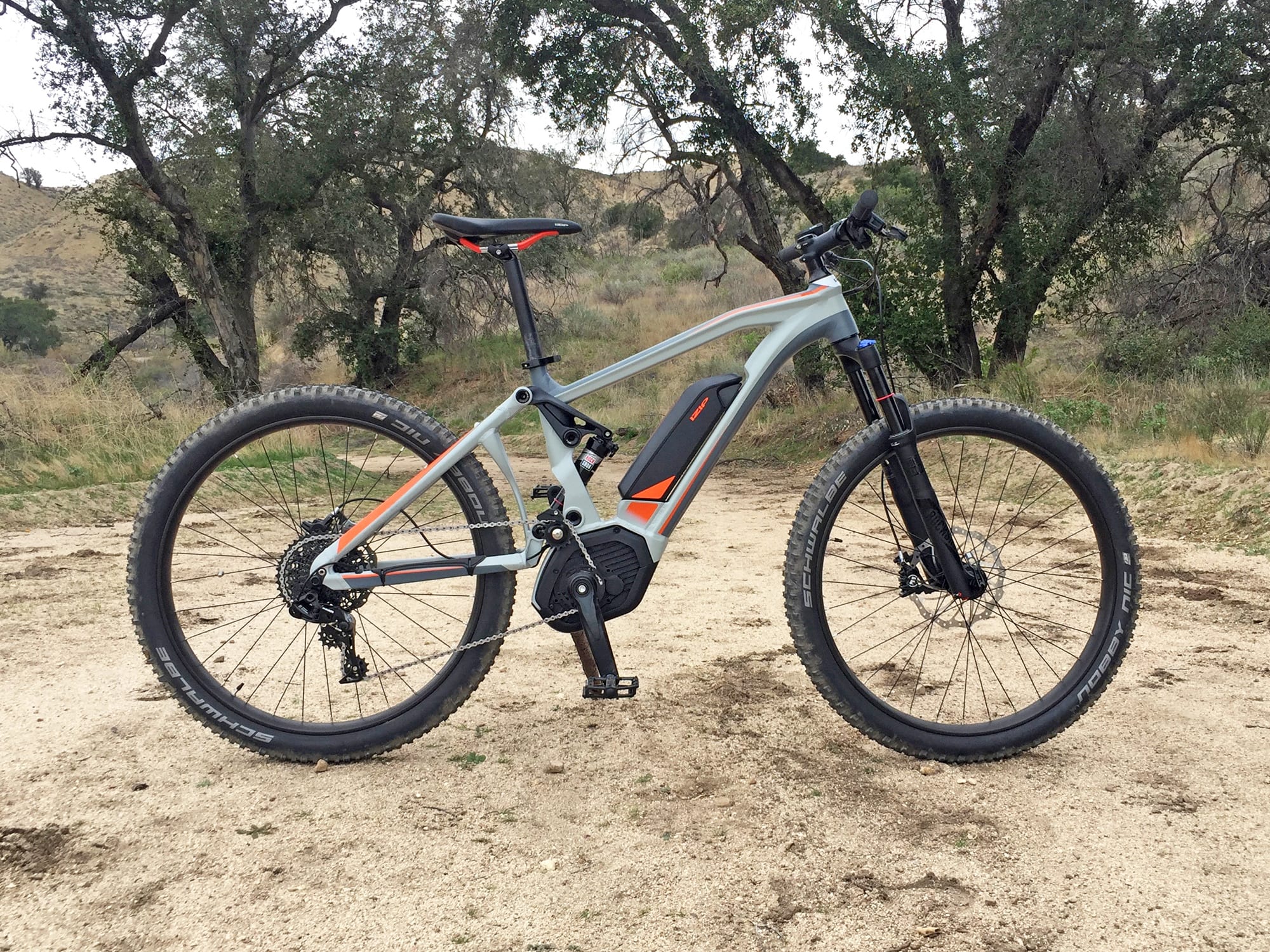

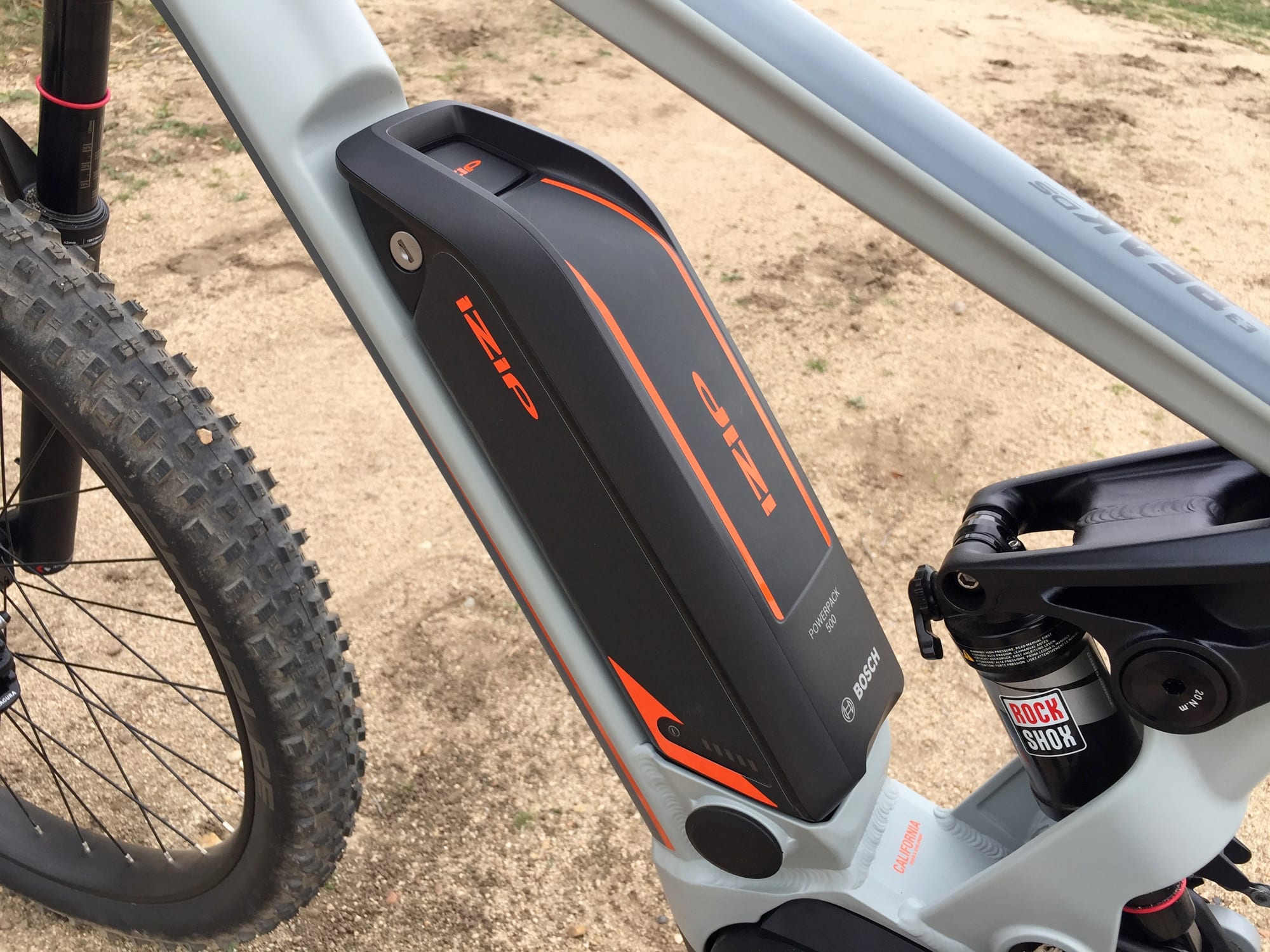
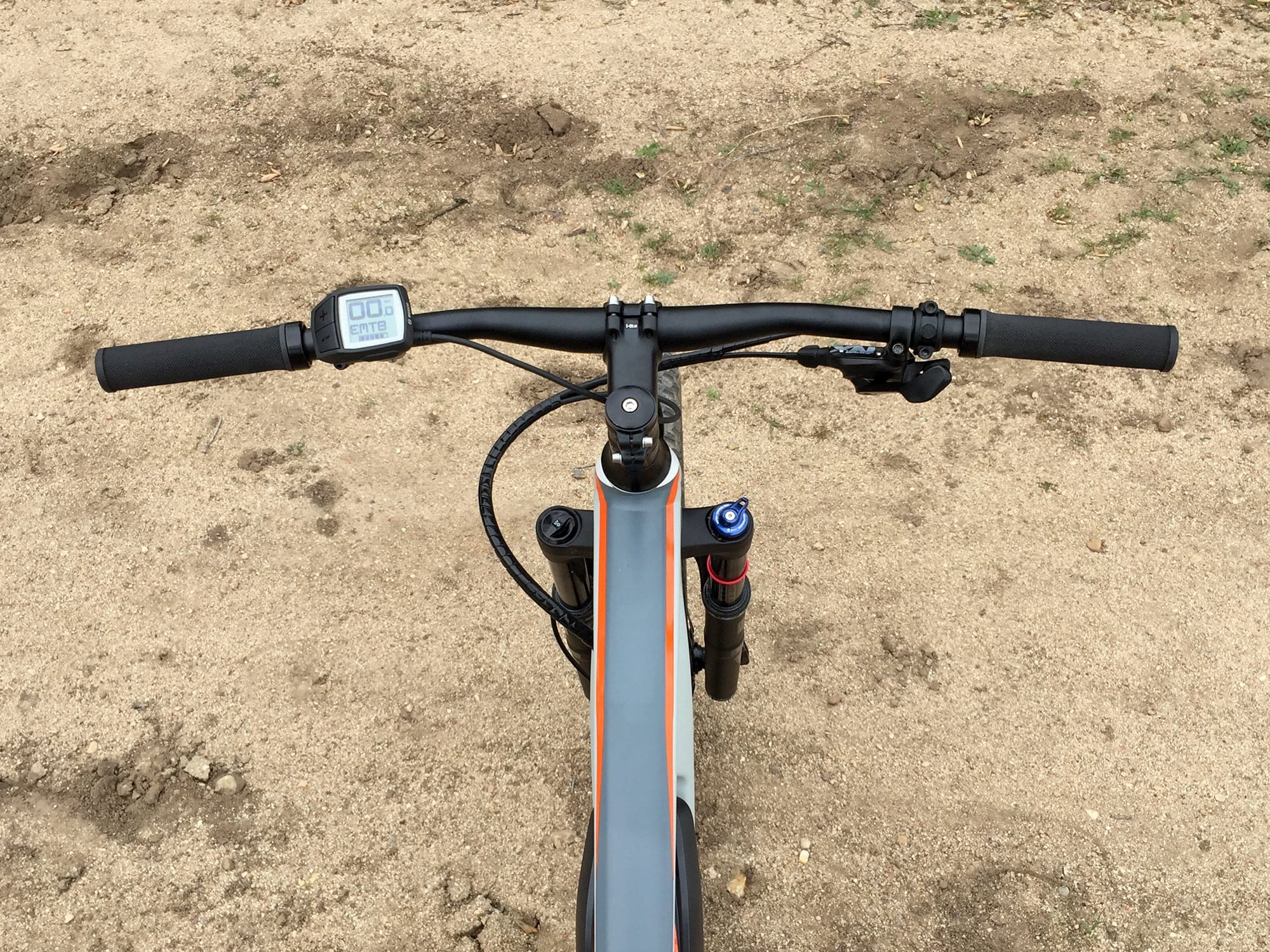
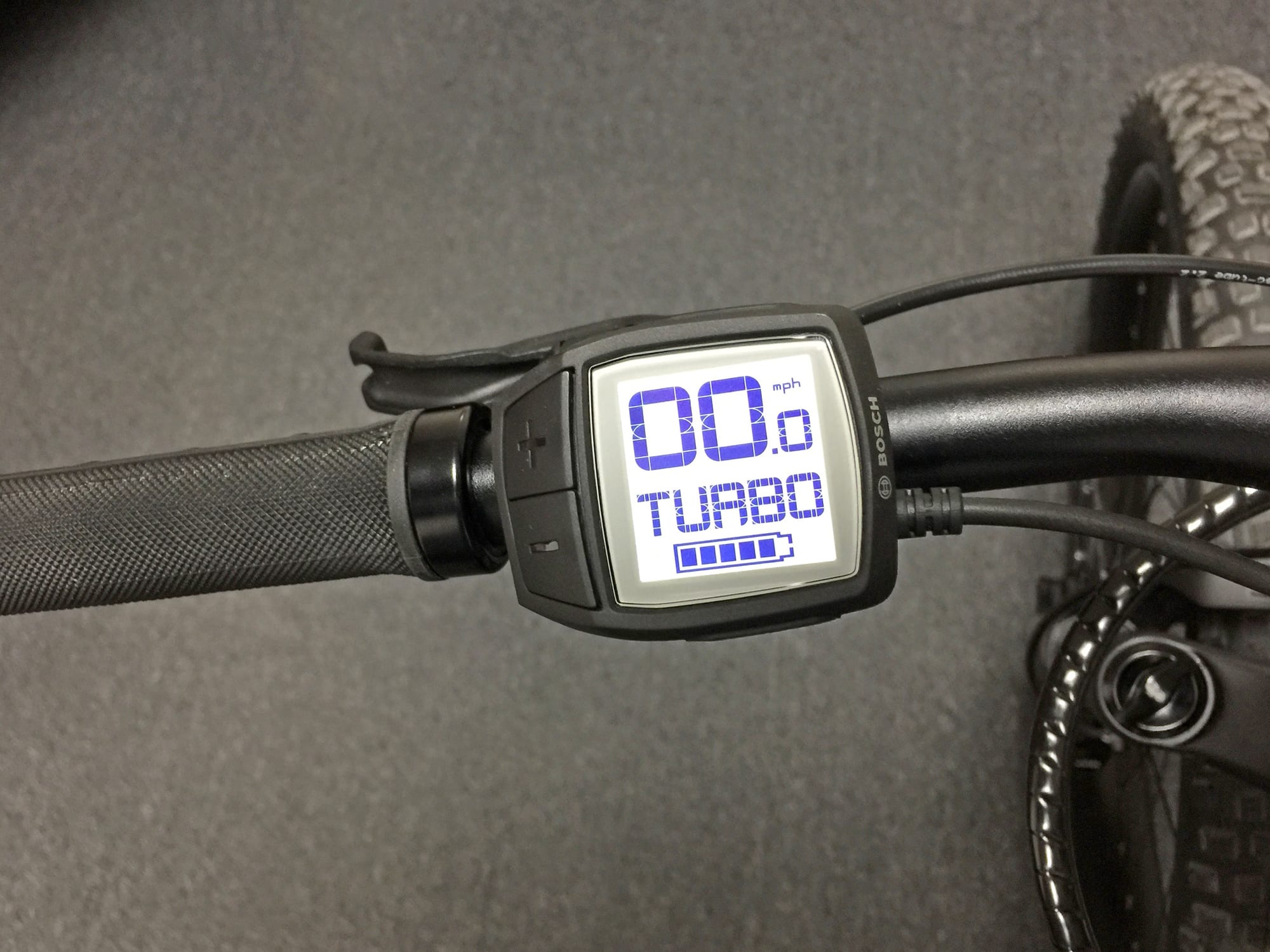
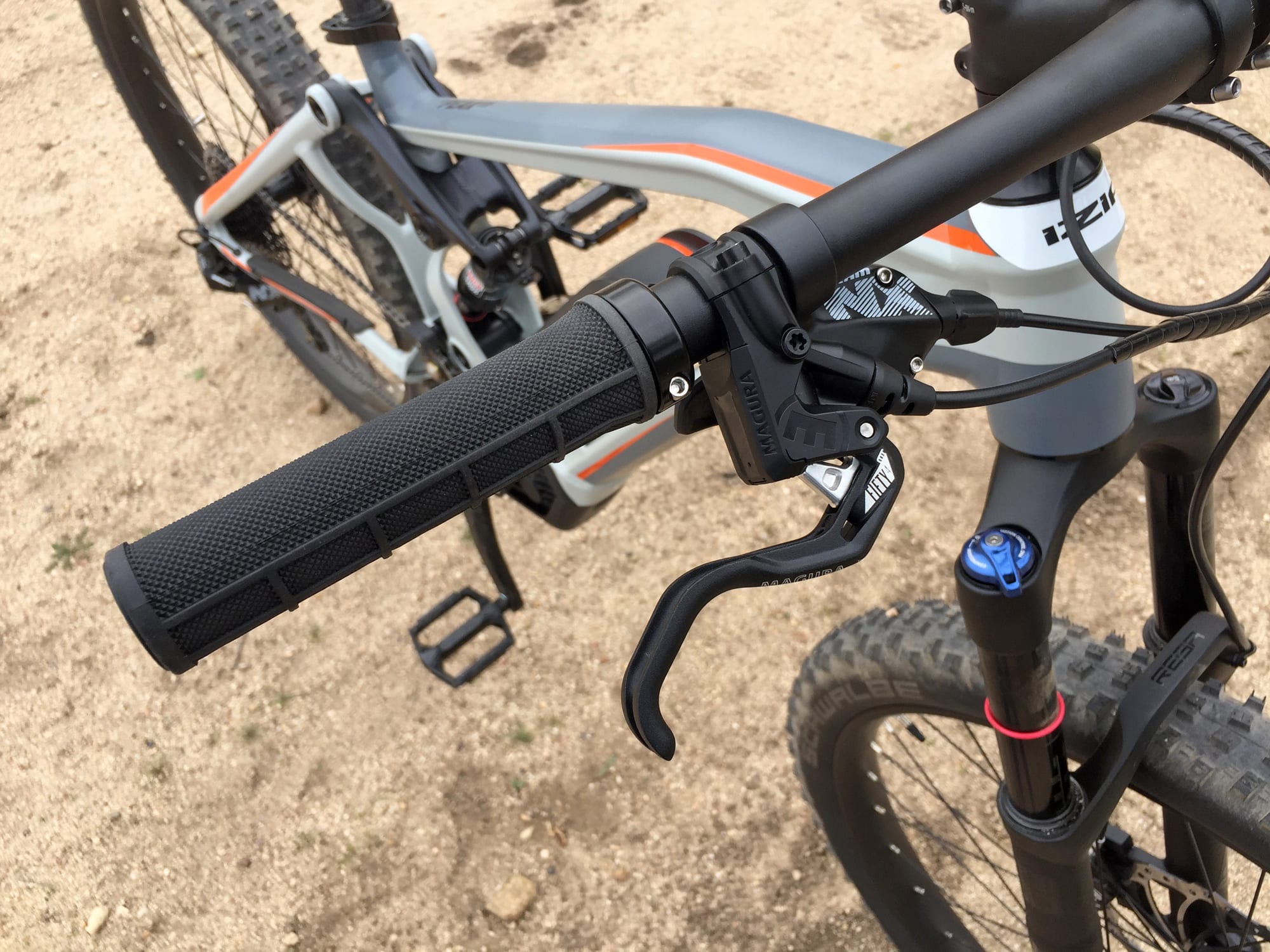
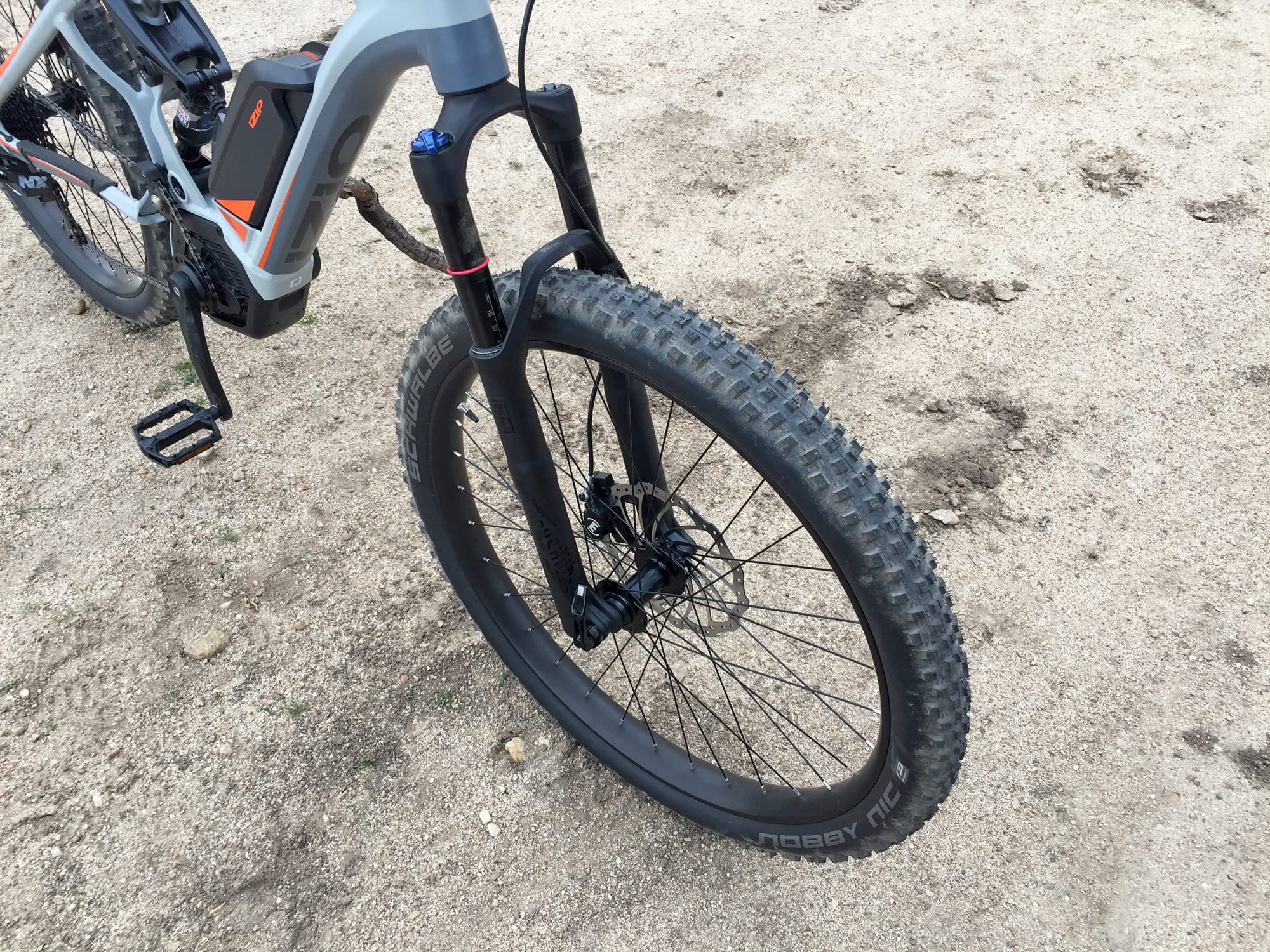
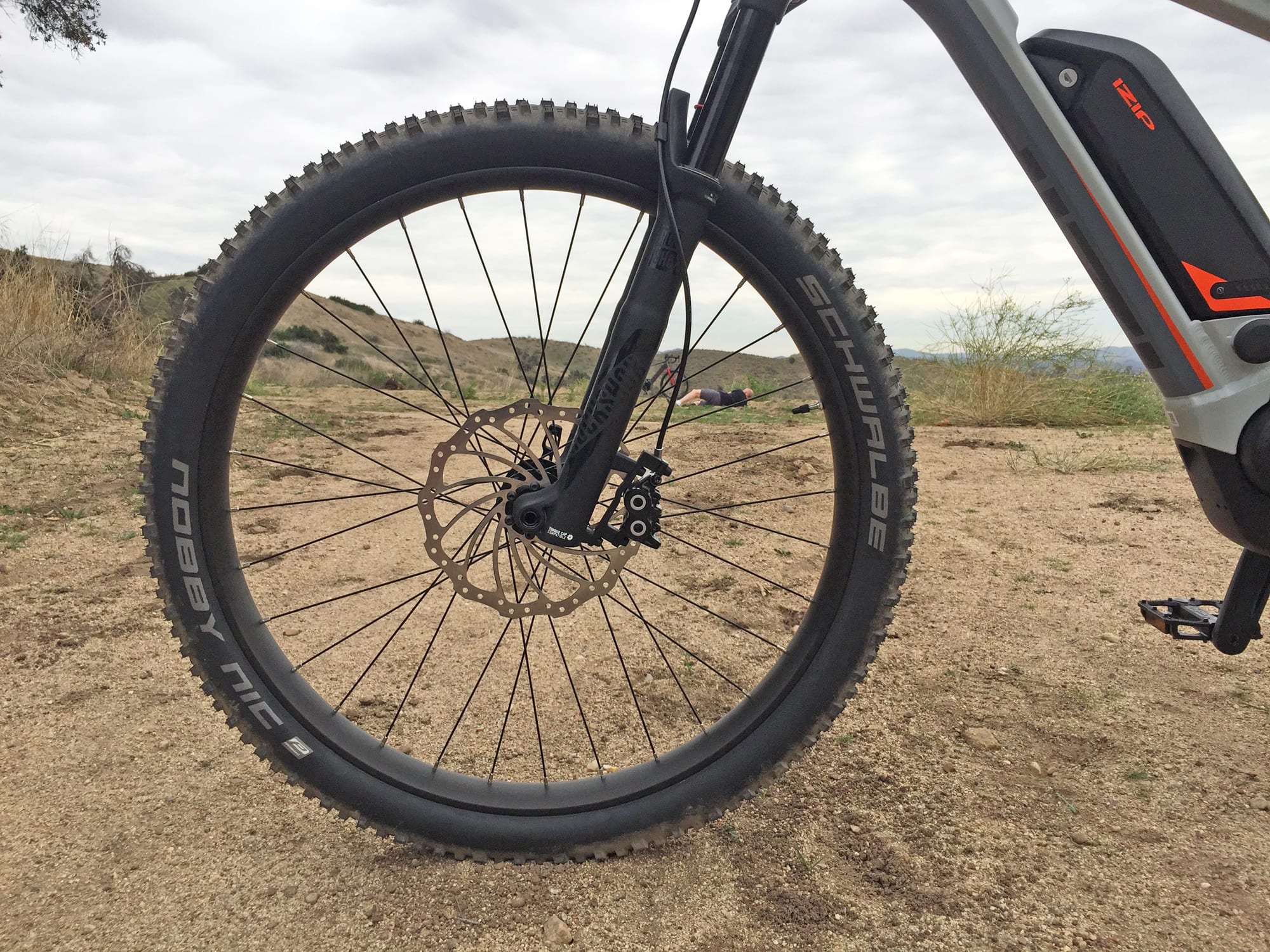
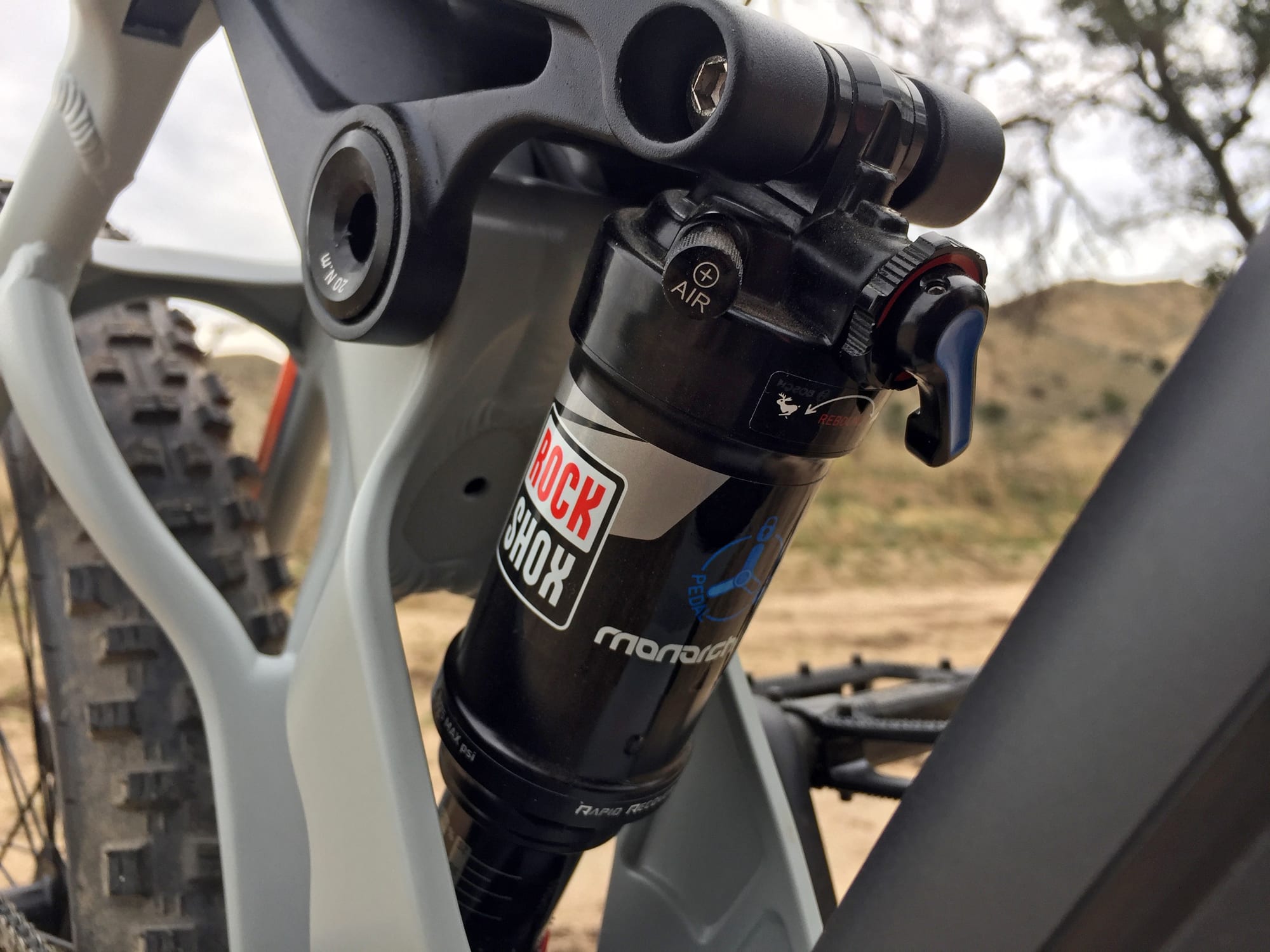
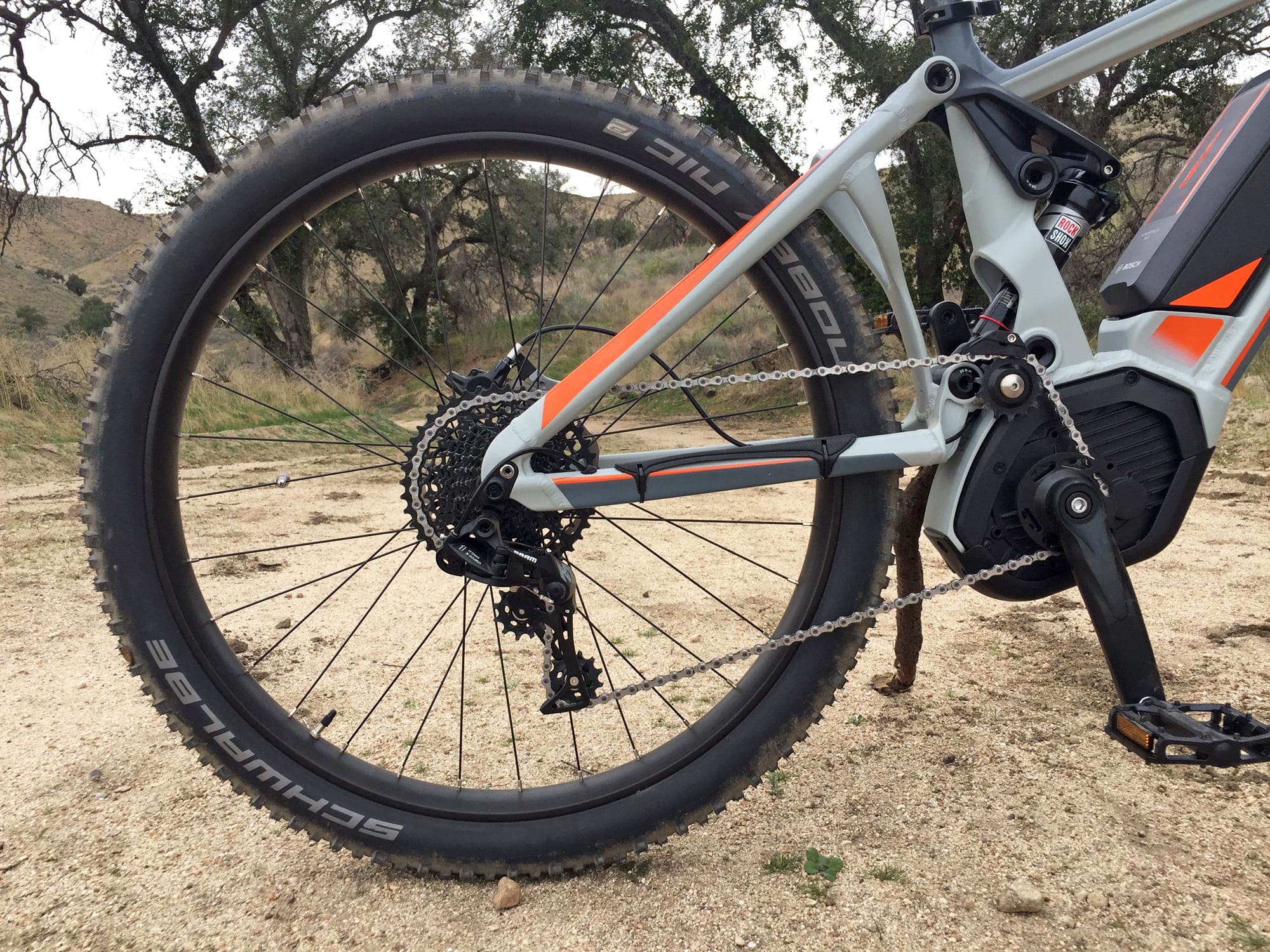
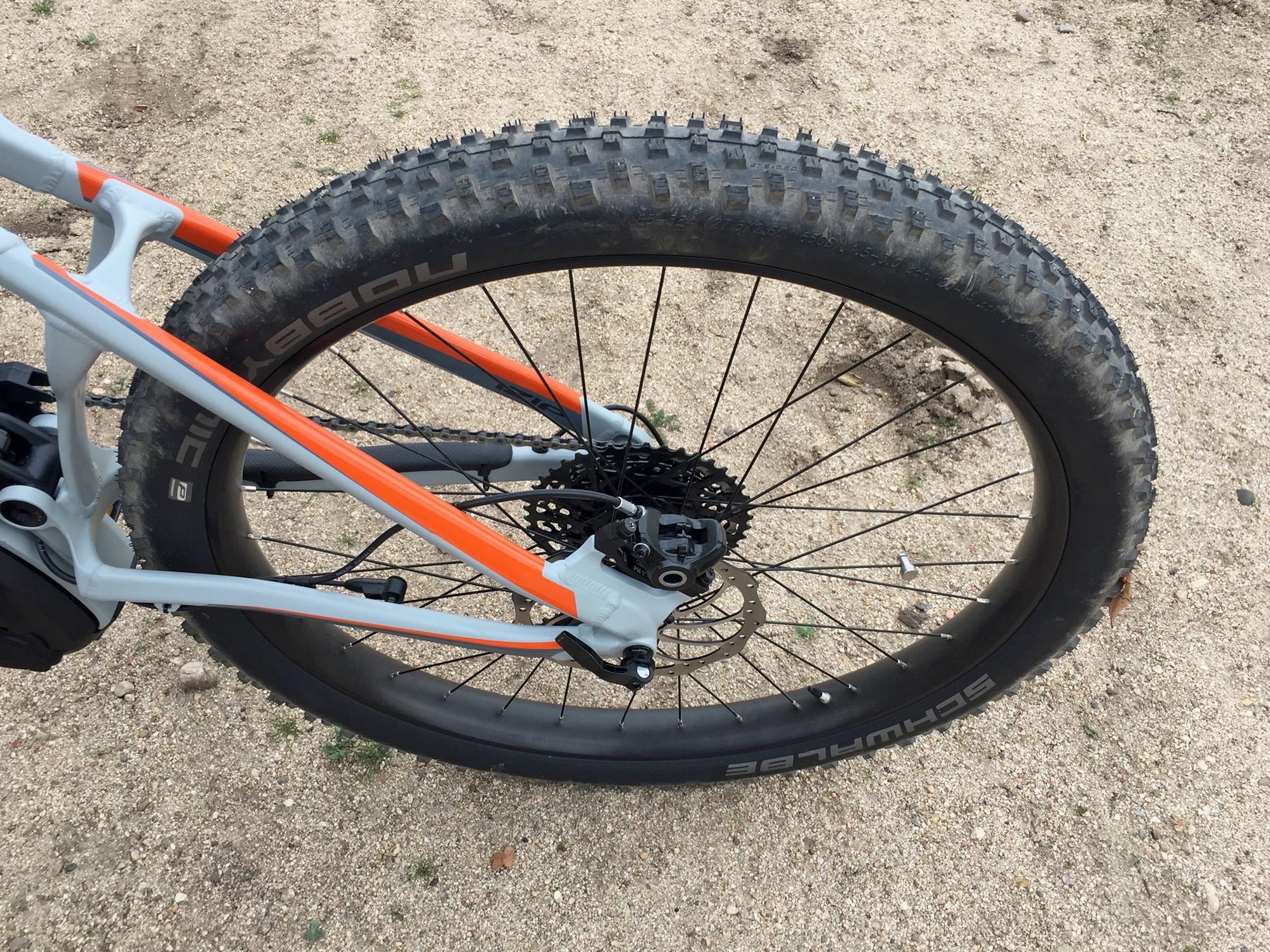

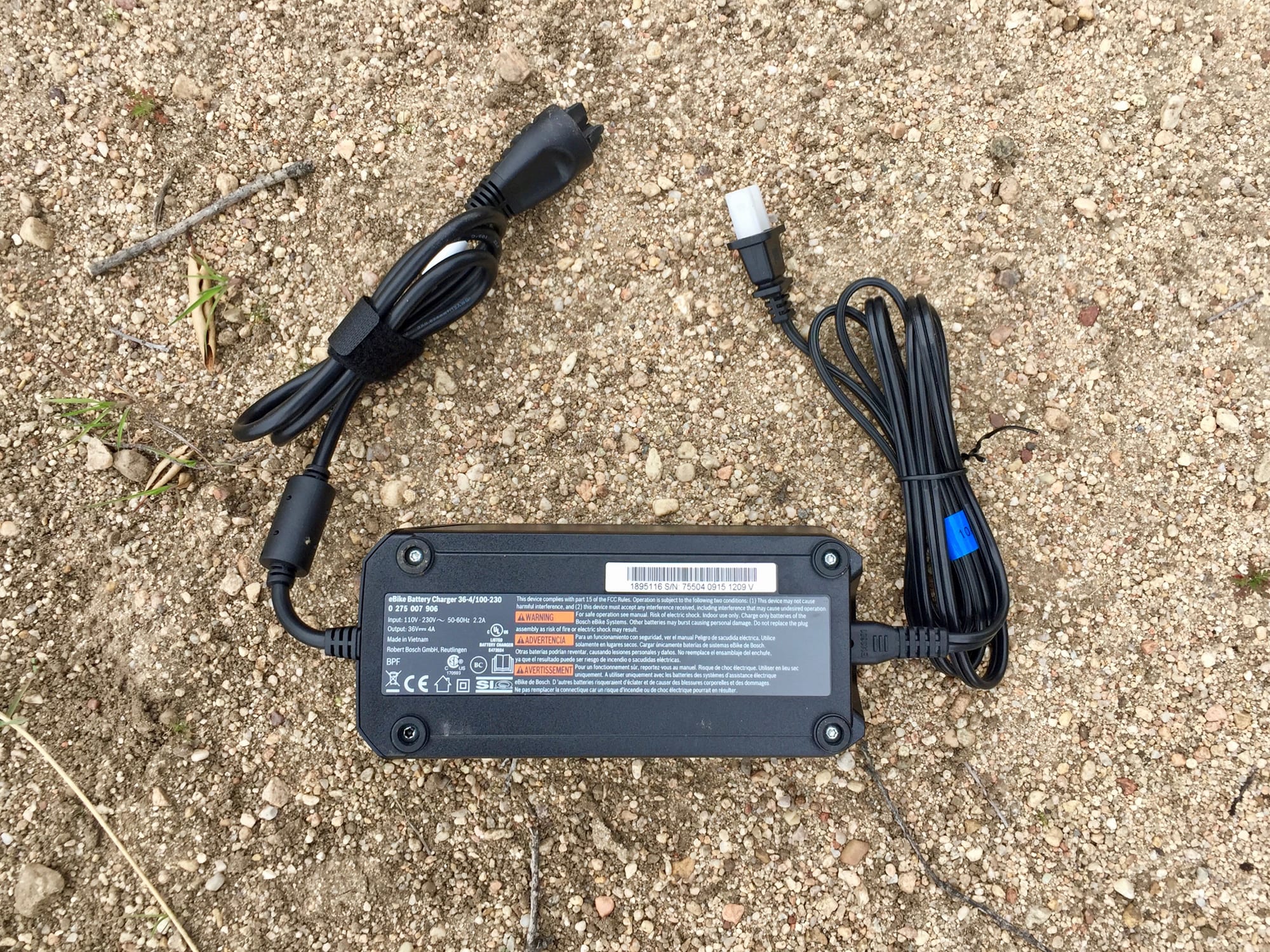

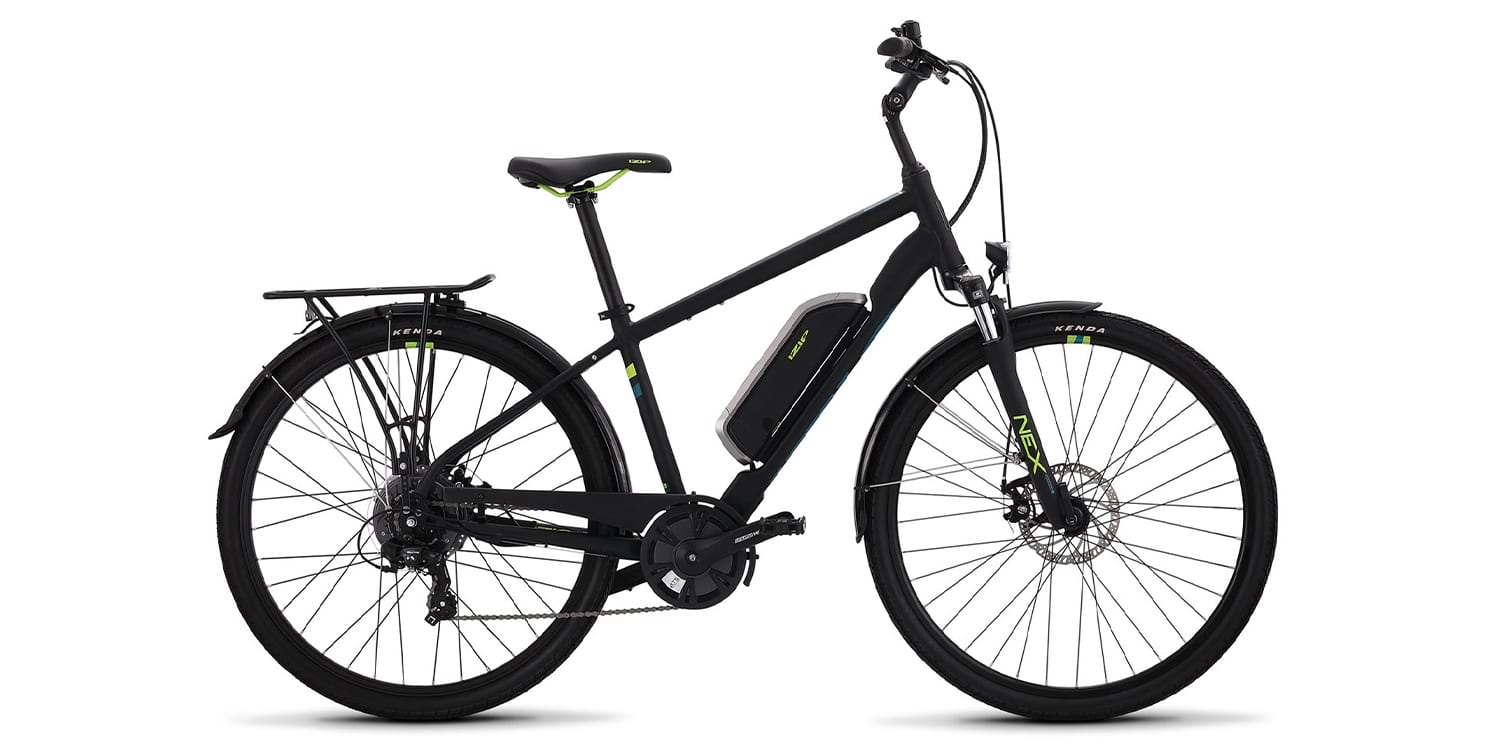
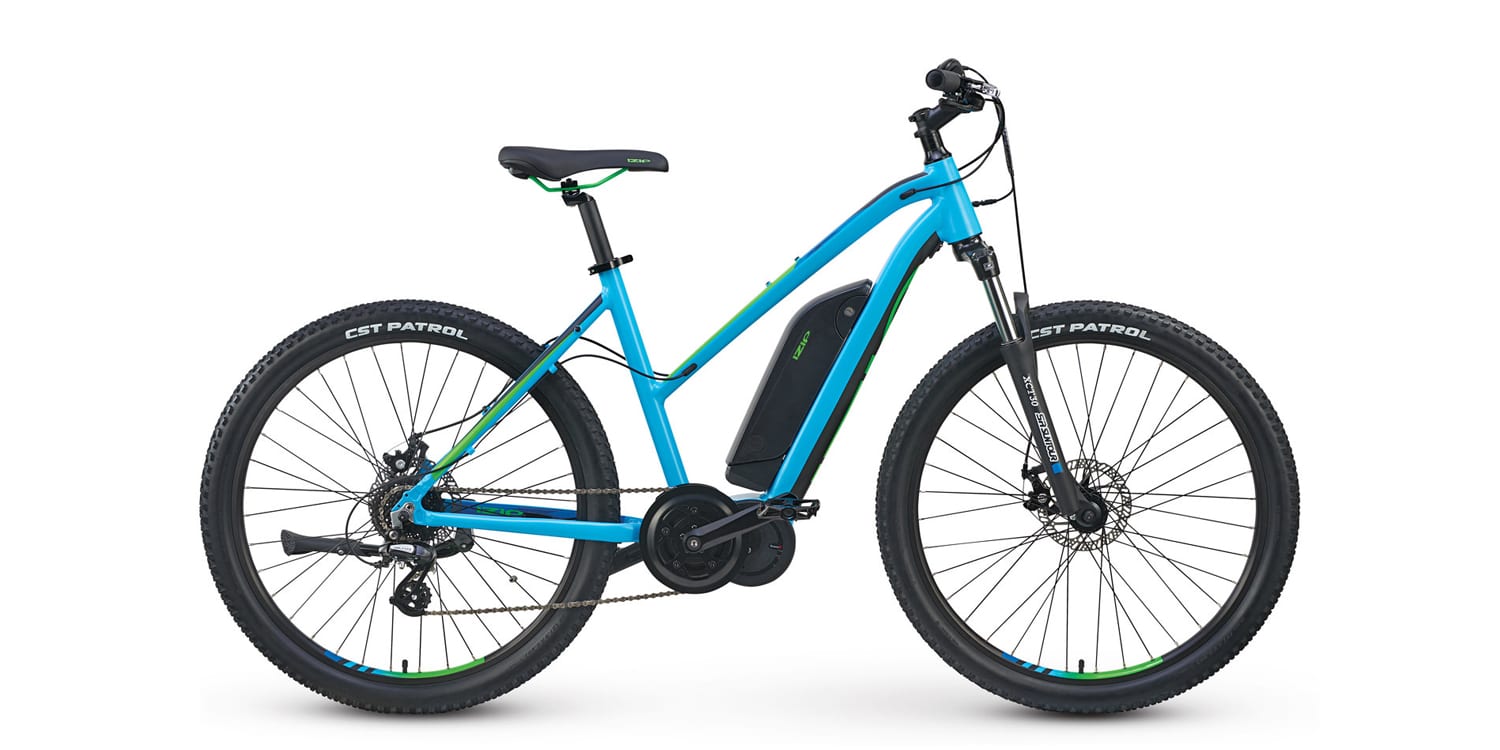
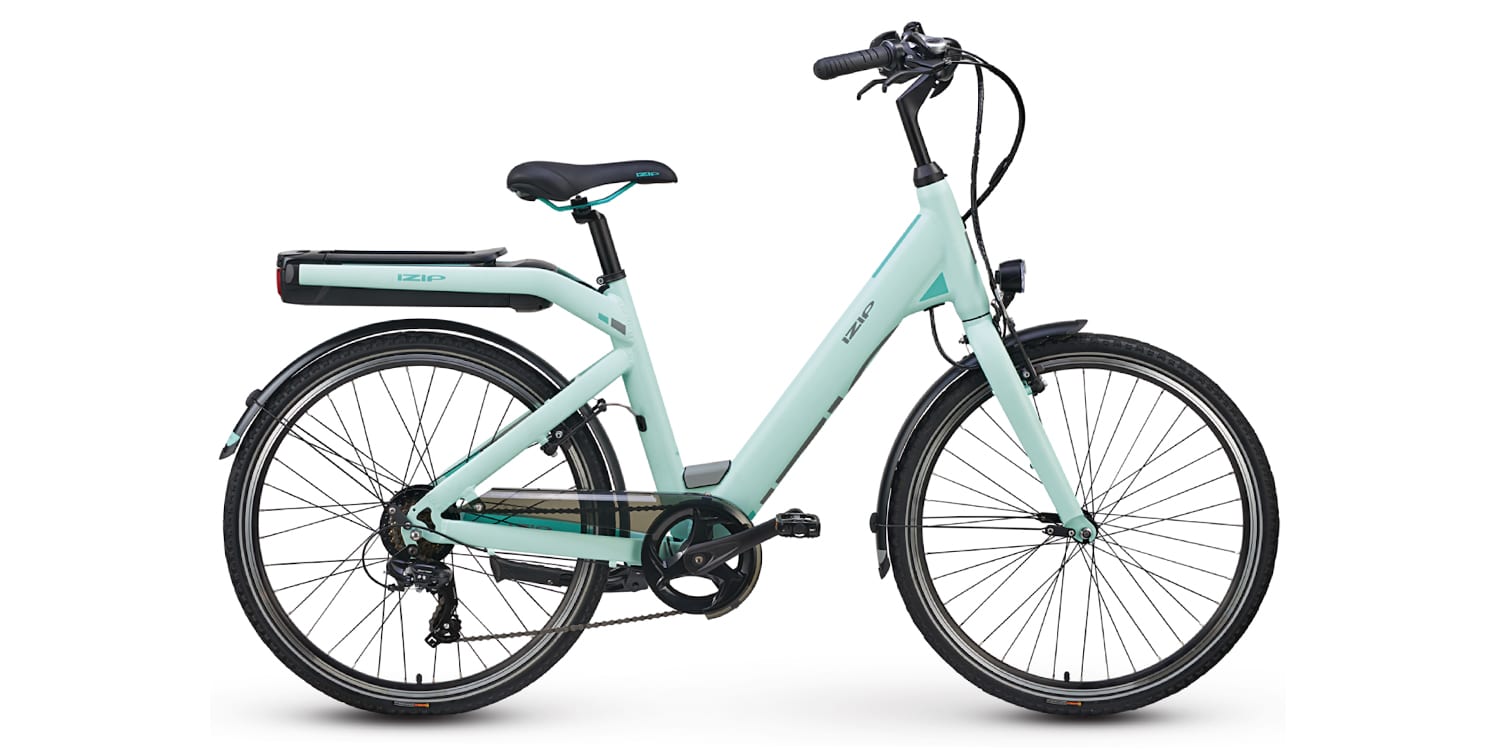
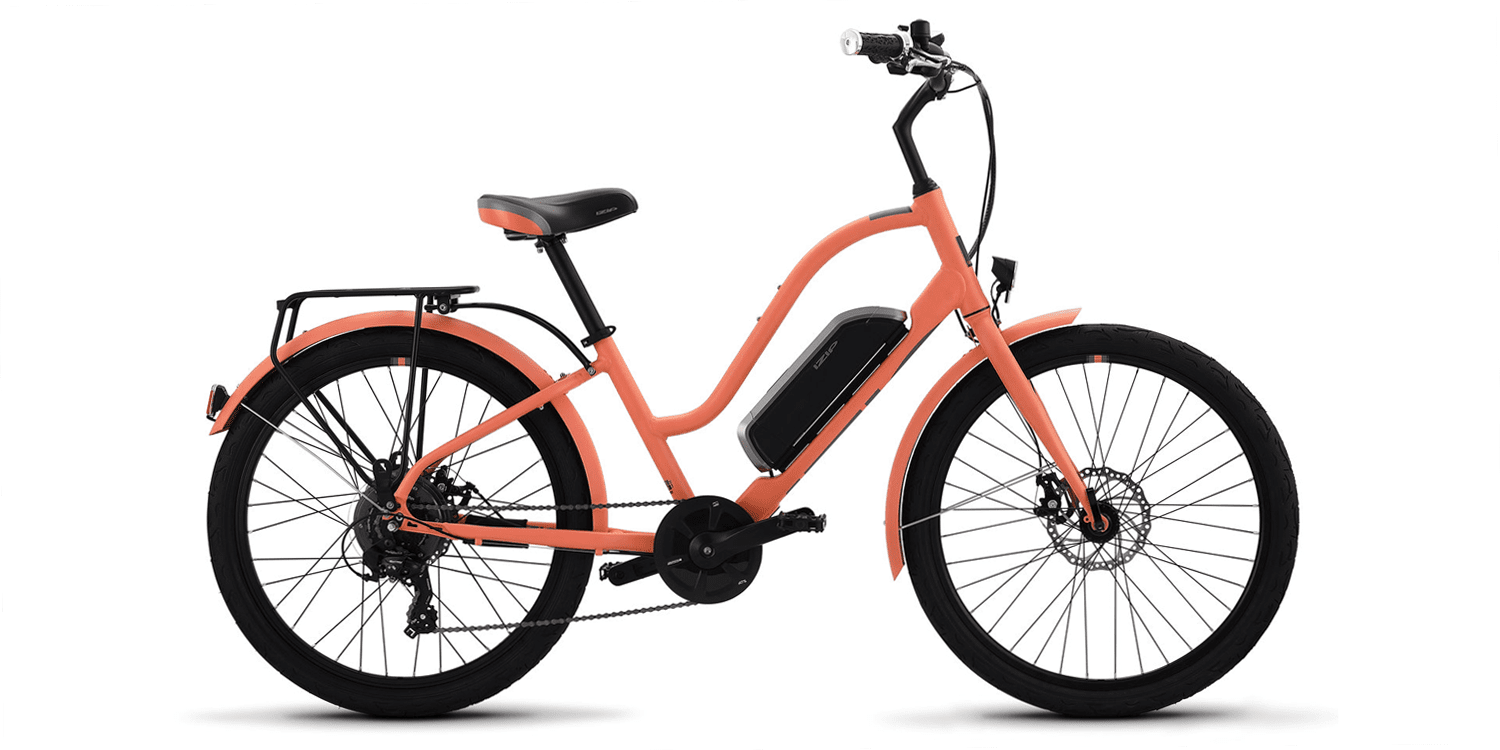
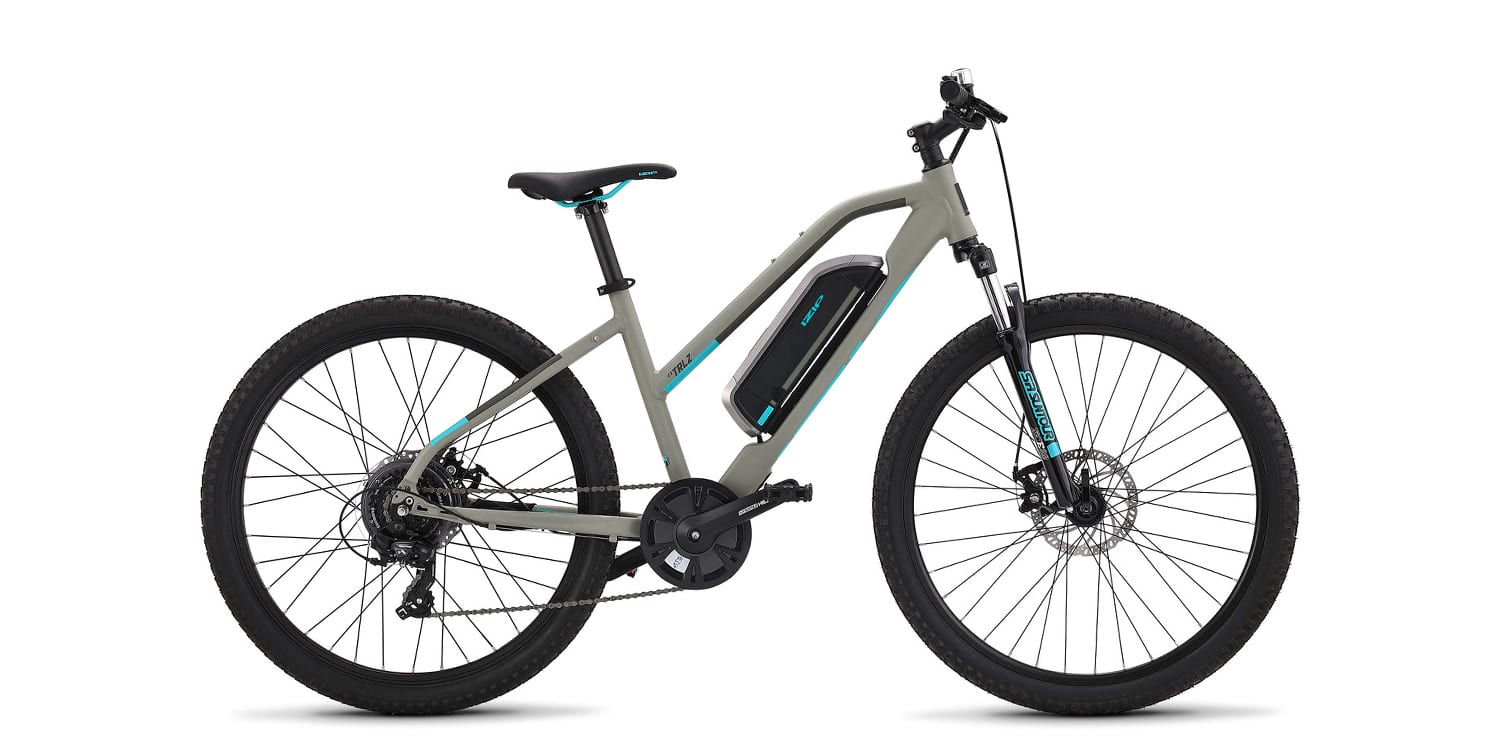

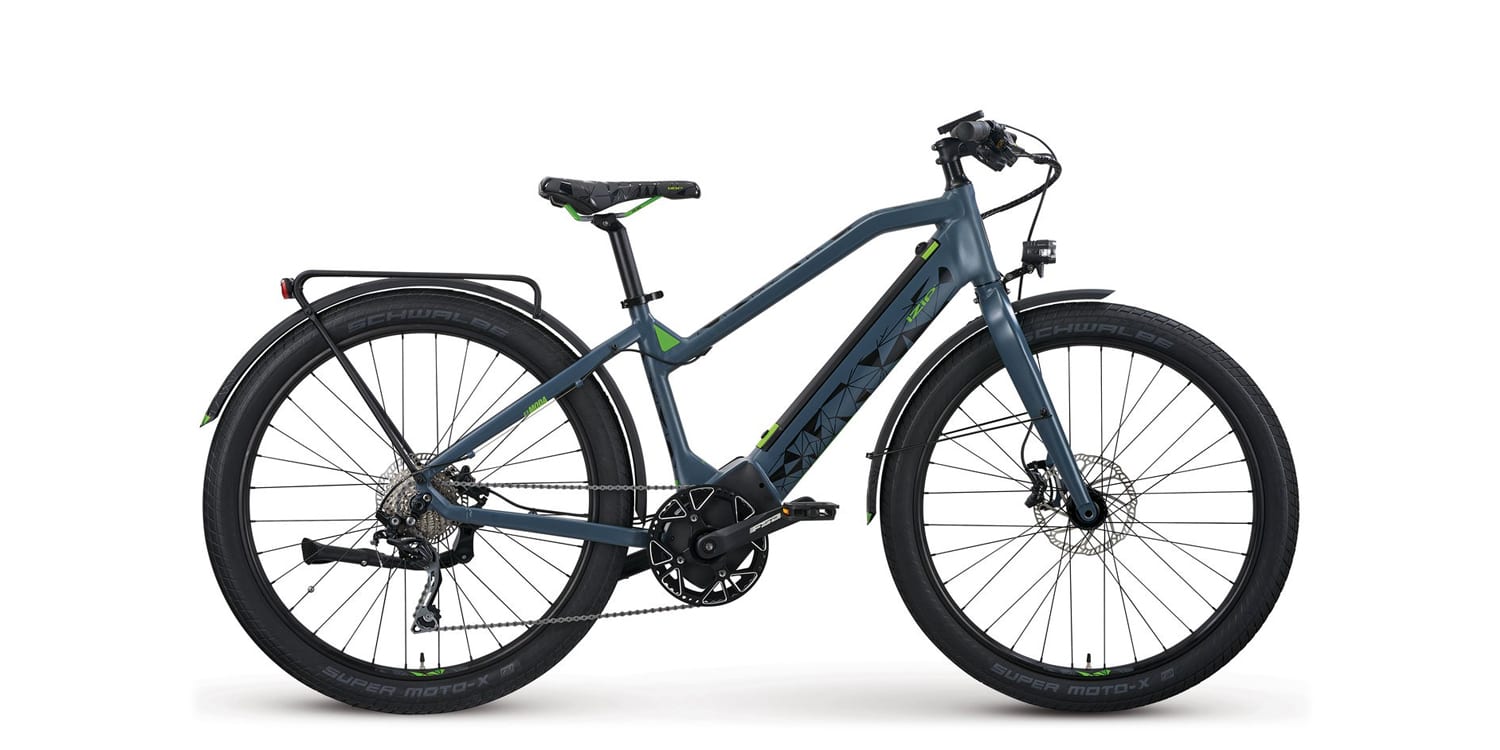
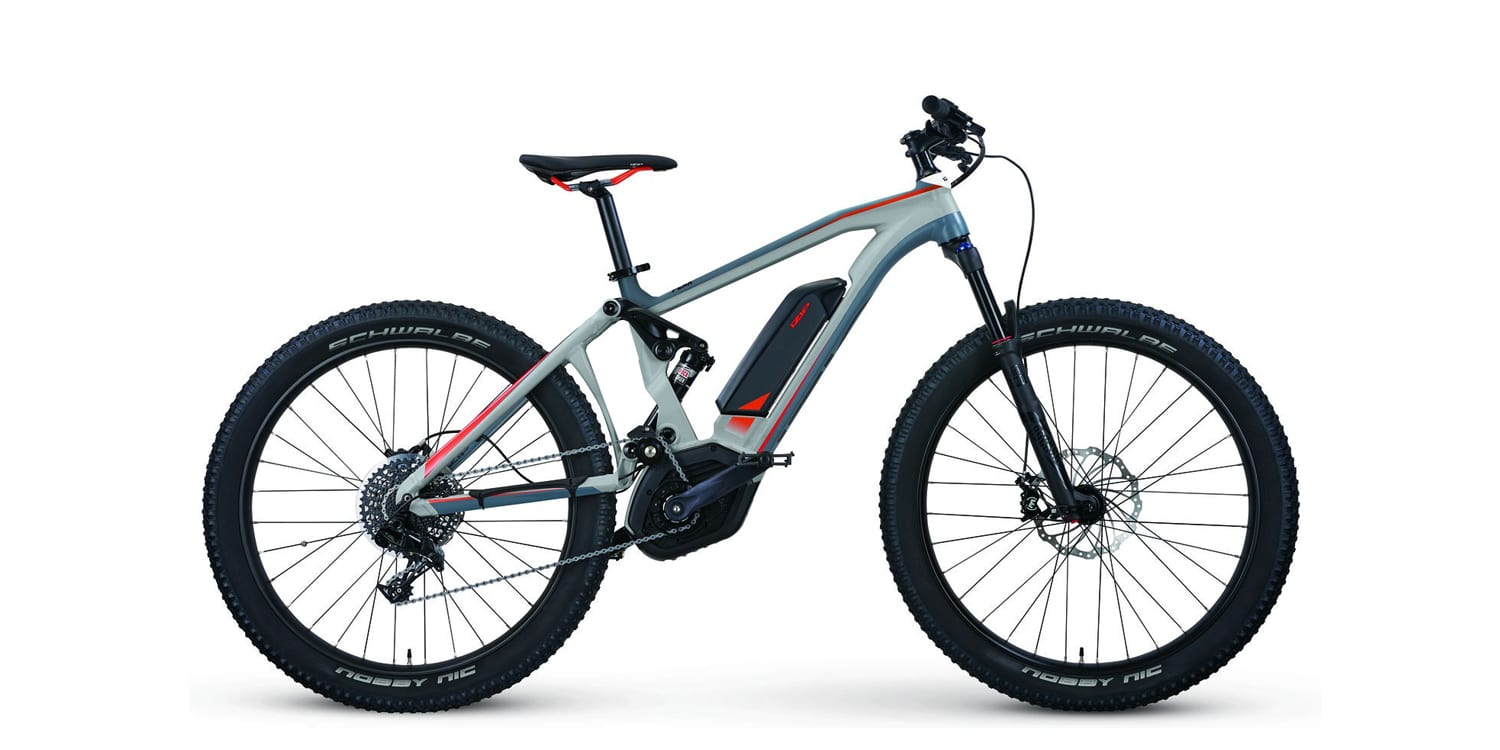
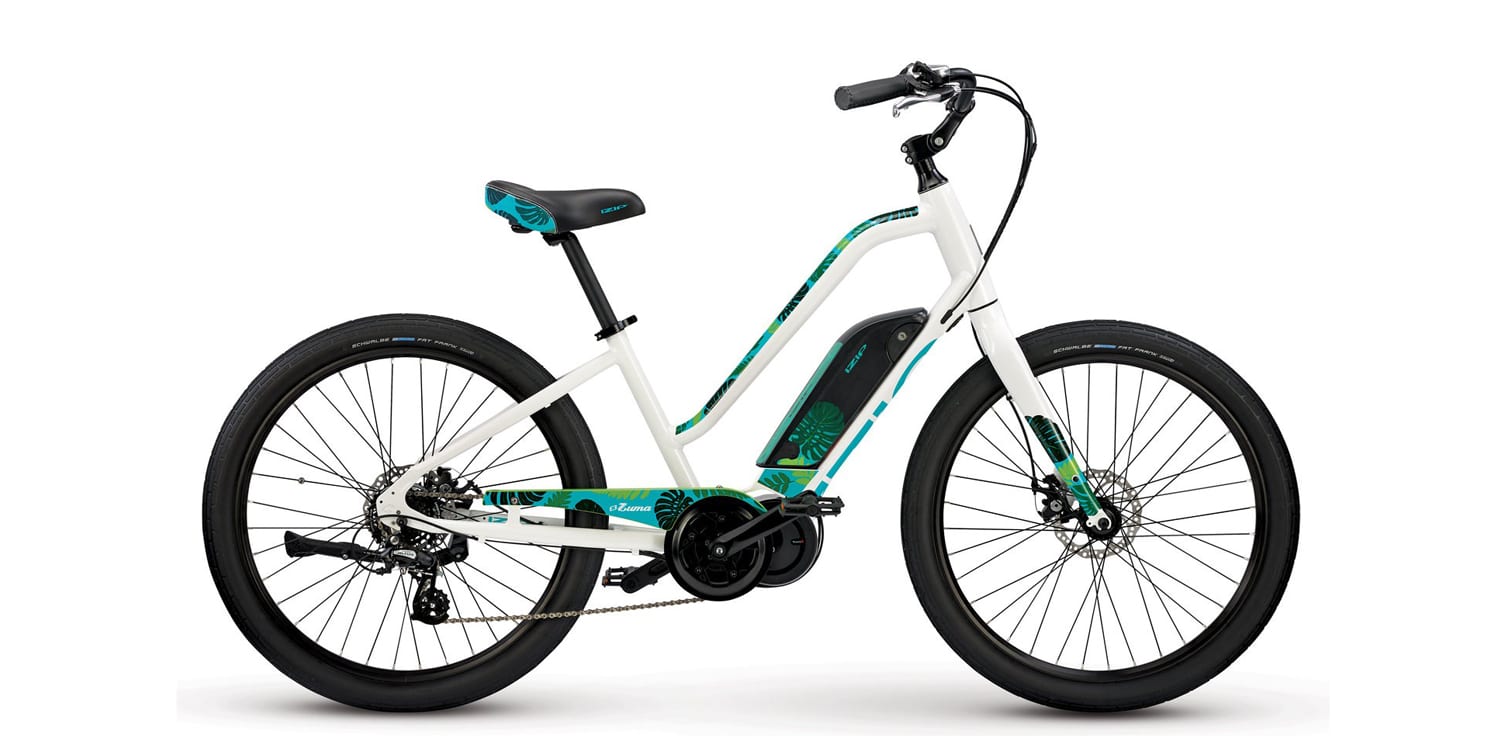
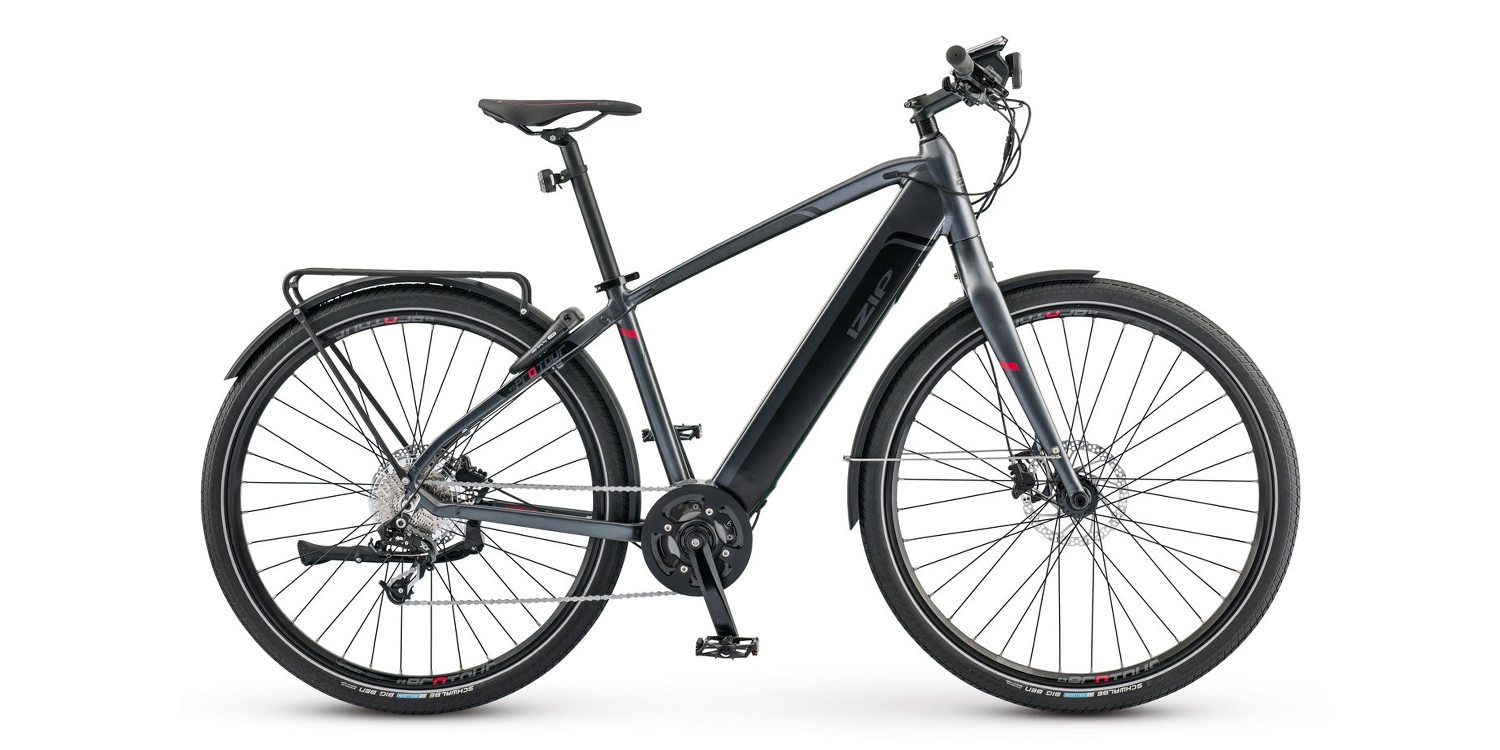
bill bateman says
I’ve had mine about a month now. I added some bright front and rear rechargeable lights 1st thing. My helmet also has a fairly bright light. This bike carries my 235# flabby self up a 15° (27%) 1/4 mile long grade with ease. The dual suspension is veryb responsive and I feel this is the most stable platform of all the bikes I tested over my 3 month, 2 state search for just the right bike. I added a Thule Tour rear rack (designed to work with rear suspension as well as hardtail) once I decided this was a long term ‘keeper’.